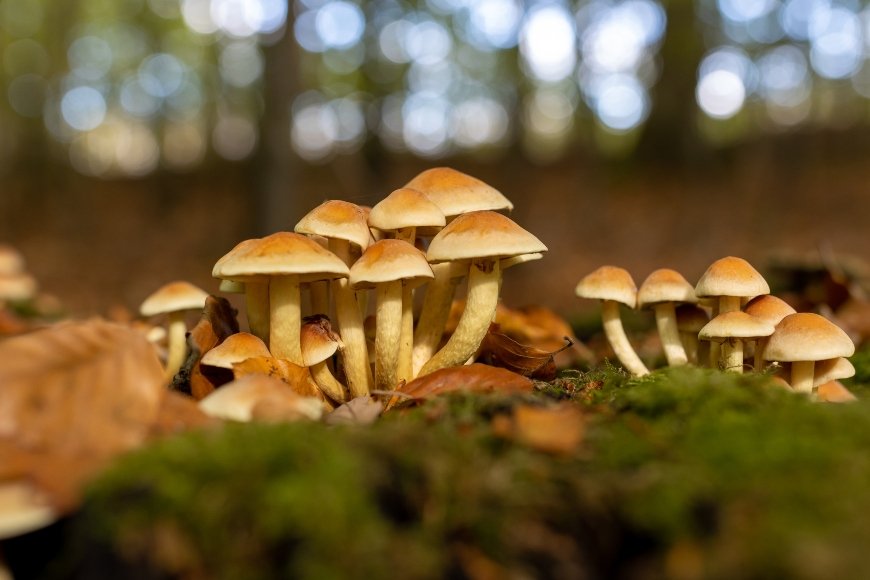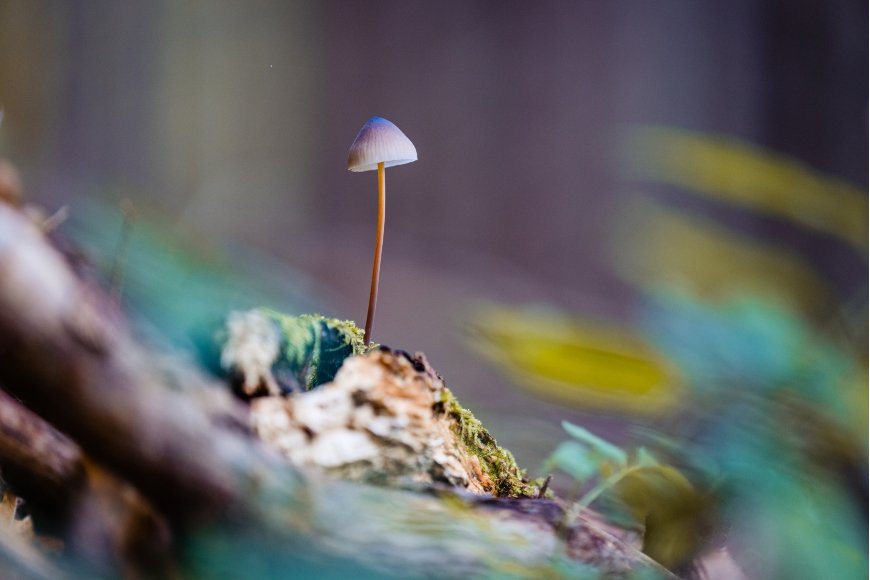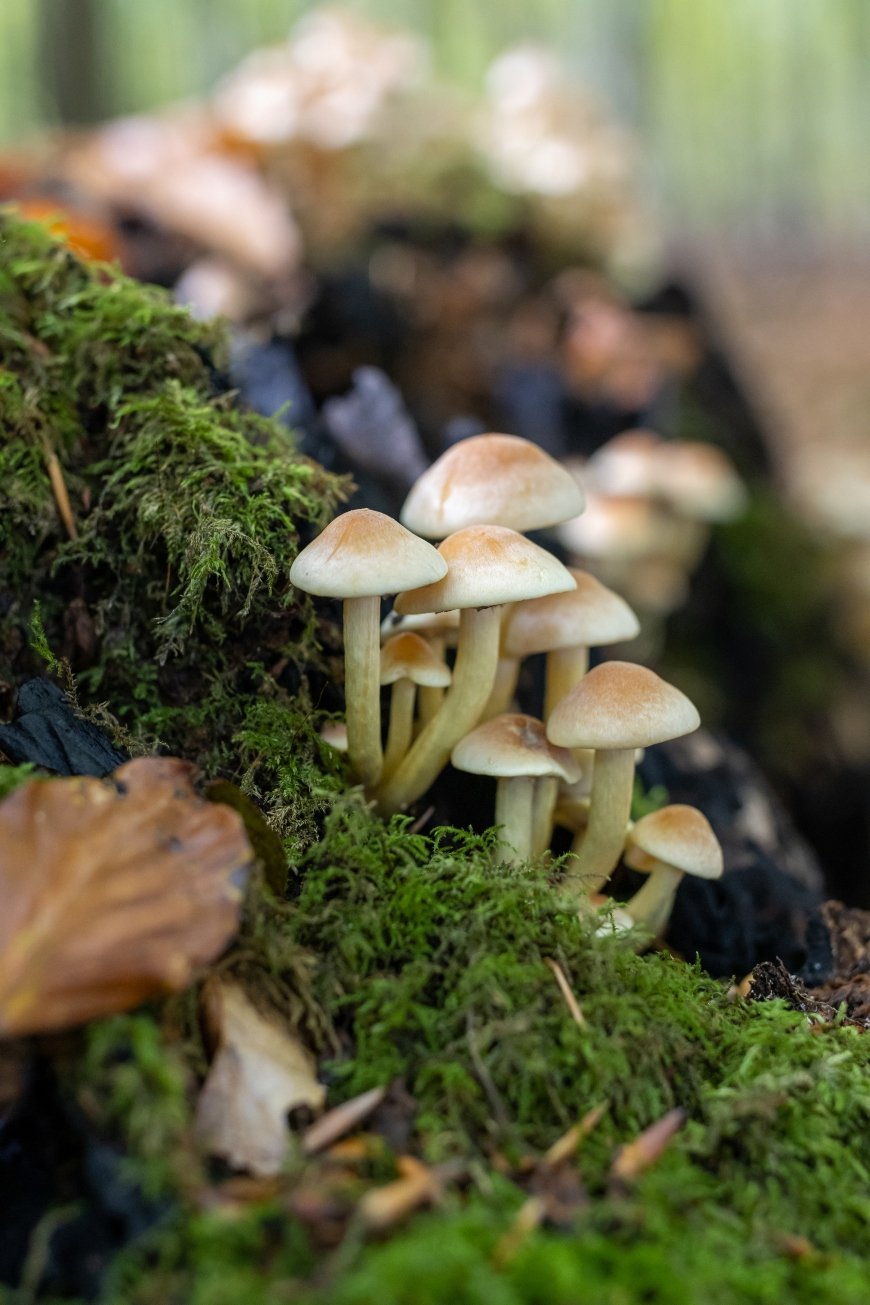Where Do Magic Mushrooms Grow?
Uncover the mystery of where magic mushrooms grow! Learn what they need to thrive, when they sprout up, and how to safely harvest them from their natural habitats.

Magic mushrooms are a fascinating organism that has captivated the attention of many for centuries. But where do these mysterious fungi grow? In this blog post, we'll dive into the specifics of where magic mushrooms grow and what they need to thrive. We'll investigate the requirements for these fungi to prosper, when they tend to emerge, and how one can responsibly acquire them from their native environments. So if you've ever wondered, "where do magic mushrooms grow?", then read on.
Table of Contents:
- Overview of Magic Mushrooms
- Where do Magic Mushrooms Grow?
- How do Magic Mushrooms Grow?
- When do Magic Mushrooms Grow?
- What do Magic Mushrooms Grow On?
- What do Magic Mushrooms Grow In?
- Safety Considerations when Harvesting Wild-Grown Shroom Gardens
- Conclusion
Overview of Magic Mushrooms
Magic mushrooms are a type of fungi that contain psychoactive compounds. They have been used for centuries by indigenous cultures in spiritual and medicinal rituals. Magic mushrooms come in a wide assortment, each with its own particular characteristics and impacts. The various species most frequently encountered are psilocybin, cubensis, and amanita muscaria.
Psilocybin is the active ingredient found in most magic mushrooms. It produces intense psychedelic experiences that can last up to six hours, depending on dosage and species consumed. Effects may include hallucinations, changes in awareness, augmented imagination, sensations of elation or a sense of being part of the natural world. Psilocybin is deemed a relatively safe psychedelic due to its low toxicity and minimal risk of physical dependence.
Cubensis has seen a surge in popularity recently, thanks to its accessibility online and the fact that it can be cultivated at home with substrates such as manure-based composts or sawdust blocks fortified with specialised nutrients. This means no need for outdoor gardening space or natural habitats like forests or meadows; all you have to do is take a trip into nature's backyard - an ideal way of reconnecting with Mother Nature. Keywords: Cubensis, Psilocybin, Baeosystin, Norbaeocystin, Psychedelic Experience, Manure-Based Composts, Sawdust Blocks, Nutrients, Outdoor Gardening Space, Natural Habitats.
Magic mushrooms, employed for ages as a religious aid, can still be found widely in the present. Home cultivation and online purchase of magic mushrooms are potential options, allowing for increased access to the powerful fungi. Understanding where they grow naturally is key to finding these powerful fungi.

Where do Magic Mushrooms Grow?
Psilocybin mushrooms, commonly referred to as magic mushrooms, are a type of mushroom that contains the psychoactive compound psilocybin and have been used for centuries in spiritual and medicinal practices. Fungi featuring the psychoactive element psilocybin, popularly known as magic mushrooms, are found in various habitats globally and have been used for ages to achieve spiritual enlightenment or medicinal effects.
When it comes to natural habitats for magic mushrooms, there are several different types of environments where these fungi can thrive. The most common species of magic mushroom is Psilocybe cubensis, which is typically found growing on cow dung or decaying woody debris in tropical and subtropical regions like Central America, South America, Mexico, Southeast Asia, Australia and New Zealand. Other species, such as Panaeolus cyanescens may be found growing on compost piles or grass clippings, while some others prefer to grow near rivers or streams in damp forests.
For those looking to cultivate their own magic mushrooms at home, spores must first be purchased from a reliable source. To create the ideal environment for growth, substrates such as brown rice flour and vermiculite mixed with other organic materials like coffee grounds or sawdust will provide the necessary nutrients. This substrate should then be put in an airtight container until it begins to colonize before being transferred into larger containers filled with more of the same material so that fruiting bodies can form after exposure to light and humidity levels remain steady. Keywords: Cultivate, Substrates, Colonize, Fruiting Bodies
Magic mushrooms can be found in the wild or grown domestically with suitable environmental conditions and nutrients. Now let's look into the growth and maturation of magic mushrooms, given that we have an understanding of their habitats.
How do Magic Mushrooms Grow?
Mushrooms of a mystical sort can be found in numerous places around the globe. To understand how they grow, it is important to understand their life cycle and the conditions needed for growth and development.
The life cycle of magic mushrooms starts with spores, which are tiny reproductive cells released by mature fungi. Under the right circumstances, such as temperature, moisture and illumination, spores will sprout to create mycelial threads that span an area in search of sustenance. Once the optimal conditions are present, mycelium will emerge from the spores and begin to colonize in search of nutrients.
Once the mycelium has formed, it needs certain nutrients in order to continue growing and developing into mushrooms. Nutrients needed for continued mycelial growth and mushroom formation comprise of saccharides, amino acids, vitamins, minerals, H2O and O. Depending on the species of mushroom being grown, some may require additional nutrients such as nitrogen or phosphorus for optimal growth and development.
When all the right ingredients come together - including temperature (typically between 55°F–77°F), humidity (usually around 80%), and light (natural sunlight or artificial lighting) - magic mushrooms will start to sprout their fruiting bodies called primordia, from which full-grown mushrooms emerge after a few days or weeks depending on species type and environmental conditions. Adding keywords such as 'fruiting body', 'primordia' and 'environmental condition' helps increase search engine optimization while providing professional-level insight into the topic at hand.
Finally, proper disposal techniques should always be used when harvesting wild-grown shroom gardens since there may be poisonous lookalikes present in the same environment which could lead to serious health risks if ingested mistakenly.
Mushrooms of the magical kind necessitate certain environments and nourishment for their growth and flourishing. As such, understanding when magic mushrooms grow is just as important in order to find them or cultivate them successfully.
When do Magic Mushrooms Grow?
Psychedelic fungi containing psilocybin can be found growing in numerous places, as well as grown at home or acquired online. When it comes to when magic mushrooms grow, there are two main factors to consider: seasonal availability and growing cycles.
Seasonal Availability of Wild-Grown Shrooms
Wild-grown shrooms tend to have seasonal availability depending on their environment. For example, Psilocybe cubensis may only be found in certain climates, such as Central America and Mexico, during specific times of the year due to temperature requirements for growth. In other regions with colder temperatures, these same species may not appear until late spring or summer months due to environmental conditions needed for growth. Additionally, many types of wild-grown shrooms will only show up after heavy rains or periods of extended moisture, which is why identifying them can often be difficult, even for experienced mushroom hunters who know where to look for them seasonally.
What do Magic Mushrooms Grow On?
Mushrooms of a mystical kind are present in many regions, manifesting as fungi. While many species grow naturally in the wild, some can also be cultivated at home with the right conditions and substrates. When it comes to cultivating shroom gardens, understanding what magic mushrooms grow on is key to successful growth and development.
Substrates used to cultivate shroom gardens vary depending on the species being grown. For example, certain species may require a substrate composed of straw while others may prefer composted manure or soil mixed with sawdust or other organic matter such as coffee grounds or cottonseed hulls. In addition, some mushroom growers use specialized substrates such as agar-based media for culturing spores from specific types of fungi like psilocybin mushrooms. Regardless of which substrate is chosen, proper preparation and sterilization techniques must be followed for optimal results.
Mushrooms with magical properties can be cultivated on various substrates, such as wood chips, hay and manure. For the best results in cultivating shroom gardens or wild-grown shrooms, it is important to understand what kind of soil they need as well as the ideal temperature and humidity levels for their growth and development.

What do Magic Mushrooms Grow In?
Mycological wonders, otherwise known as psilocybin-containing fungi or 'magic mushrooms', can be discovered in a variety of ecosystems globally. To ensure proper growth and development of these organisms, certain environmental conditions must be met. Temperature and humidity levels need to be ideal for the mushroom's life cycle as well as soil requirements for both wild-grown shroom gardens and cultivated shroom gardens.
For most species, a temperature range of 10°C (50°F) to 25°C (77°F) is considered ideal for mushroom cultivation. Optimal temperatures vary by species, but this range provides an excellent starting point when attempting to cultivate any type of mushroom garden. Additionally, high humidity levels should also be maintained, with relative humidities ranging from 70% - 80%. This helps keep moisture within the substrate where it is needed most for the successful growth and development of the fungus.
Creating substrates tailored to each individual species' needs is essential when cultivating shroom gardens. For this purpose, one can mix coffee grounds or vermiculite with brown rice flour and water that has been pasteurized at 140 degrees Fahrenheit before inoculating the mixture with spores or spawn material bought online. Utilizing these key ingredients in the right proportions will ensure a successful mushroom-growing venture for any professional mycologist.
No matter what environment you choose to cultivate your magic mushrooms in, it is important that you understand all aspects involved in order to have success. Additionally, safety measures should be taken when harvesting wild-grown shrooms from their natural habitats so as not to mistakenly harvest poisonous lookalikes instead.
Growing magic mushrooms necessitates an understanding of the conditions necessary for successful cultivation, including temperature and humidity levels as well as soil composition. In order to safely harvest wild-grown shroom gardens, one must be aware of poisonous lookalikes and use protective gear when harvesting them.
Safety Considerations when Harvesting Wild-Grown Shroom Gardens
When harvesting wild-grown shroom gardens, safety is of utmost importance. The first step in ensuring a safe harvest is to identify poisonous lookalikes. Identifying the difference between edible and toxic species is essential for safe harvesting, as ingesting a poisonous mushroom can be dangerous. Prior to harvesting, it is essential to acquire the necessary knowledge and skills in order to correctly differentiate between edible and toxic mushrooms.
Protective gear is also necessary when harvesting wild-grown shroom gardens. Gloves should always be worn when handling potentially hazardous fungi, as some species may cause skin irritation or allergic reactions if touched directly with bare hands. Long sleeves and pants are recommended for additional protection from contact with harmful fungi spores that may become airborne during the harvesting process.
Conclusion
Knowing where to look and how to identify them is key for anyone interested in harvesting wild-grown shrooms. With an understanding of their growth patterns, you can safely find and harvest these mysterious fungi with confidence. Remember, when it comes to gathering magic mushrooms, safety should always come first - so make sure you know exactly where magic mushrooms grow before embarking on your journey.






































































































































